
10 Great Mirrorless Cameras That We Love This Year
Mirrorless cameras offer better features than DSLRs in smaller bodies, helping to make photography and film making easier. These are the models to consider.
Camera Gear Guides | Camera Guides | By Usnea Lebendig and Mark Condon | Last Updated: March 27, 2024
We tested the latest mirrorless cameras to bring you this definitive guide.
Whether you’re a beginner or an experienced photographer, you’re about to learn how to choose the perfect camera for your needs.
We’re a team of professional photographers and filmmakers, so investing in the best gear is critical.
Each camera we included below offers first-class image quality, features, build and value for money.
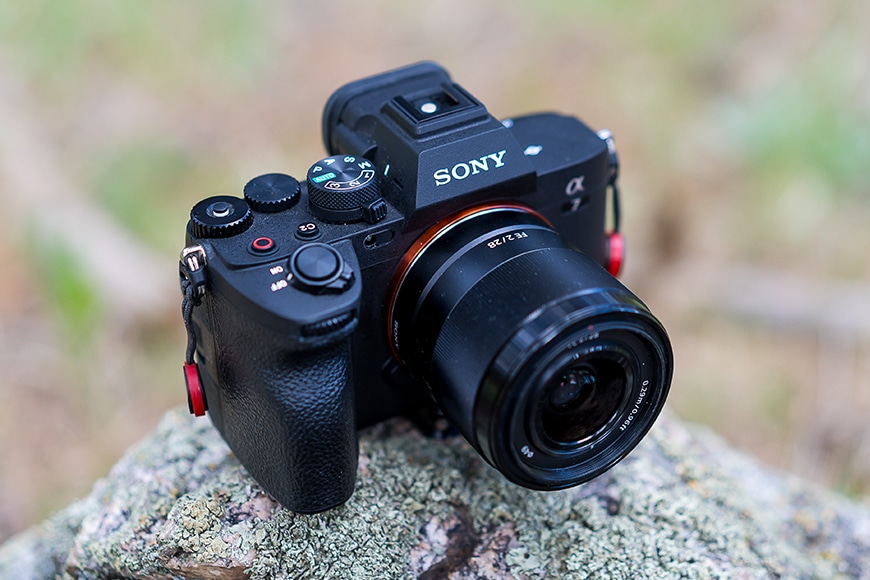
An all round powerhouse mirrorless camera, improving on its predecessor (last year's winner), with better autofocus, image quality, ergonomics and features.
Mirrorless cameras offer the latest technology to make photography easier than DSLR cameras.
They offer useful features like electronic viewfinders, high frame rates, complete AF area coverage and in-body image stabilization.
Let’s take a closer look at the top mirrorless options you need to consider this year.
What is the Best Mirrorless Camera in 2024?
| Image | Product | Features | ||
|---|---|---|---|---|
 | Canon EOS M50 MK IIBEST FOR BEGINNERS |
| CHECK AMAZON PRICE →CHECK B&H PRICE → | |
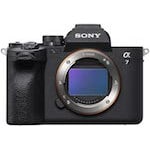 | Sony a7IVBEST FOR PROFESSIONALS |
| CHECK AMAZON PRICE →CHECK B&H PRICE → | |
 | Fujifilm X-T5BEST FOR ENTHUSIASTS |
| CHECK AMAZON PRICE →CHECK B&H PRICE → | |
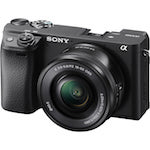 | Sony a6400BEST UNDER $1000 |
| CHECK AMAZON PRICE →CHECK MOMENT PRICE → | |
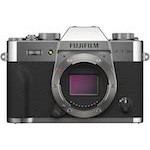 | Fujifilm X-T30 IIBEST FOR TRAVEL |
| CHECK AMAZON PRICE →CHECK MOMENT PRICE → | |
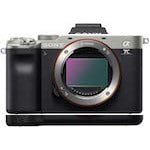 | Sony a7CBEST COMPACT FULL FRAME |
| CHECK AMAZON PRICE →CHECK B&H PRICE → | |
 | Sony a7R VBEST FOR OUTDOOR PHOTOGRAPHY |
| CHECK AMAZON PRICE →CHECK B&H → | |
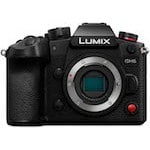 | Panasonic Lumix GH6BEST FOR VIDEO |
| CHECK AMAZON PRICE →CHECK B&H PRICE → | |
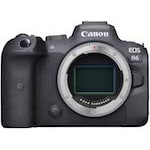 | Canon R6BEST FOR WEDDING PHOTOGRAPHY |
| CHECK AMAZON PRICE →CHECK B&H PRICE → | |
 | Nikon Z6BEST BUDGET FULL FRAME |
| CHECK AMAZON PRICE →CHECK B&H PRICE → |
Sony a7IV – Best Full Frame Mirrorless Camera for Professionals

Images: Marc Bergreen for Shotkit
- Superb image quality
- Excellent low-light performance
- Updated AI-powered autofocus.
- 5-axis in-body image stabilization
- Fully articulating rear screen
- AF tracks subjects at up to 10fps
- New breathing compensation mode
- Eye AF available in video mode
- 4K video at 60p with 10-bit color sampling
- Smart subject recognition
- Live stream capable
- Full-size HDMI port
- Excellent battery life
- Extremely customizable
- Much improved menu system
- Rich lens library
- Durable weather-sealed body
- Only 6fps at highest quality settings
- Rolling shutter
- Heavier than the A7III
- No Pixel Shift multi-shot mode
- LCD resolution screen not as strong as competitors
- Eye detection not yet 100%
- Expensive
Sensor: Full-frame | Resolution: 33 megapixels | Viewfinder: 3.69M dots | Monitor: 3-inch fully-articulated touchscreen, 1.04M dots | Autofocus: 425 points | Max frame rate: 10fps | Video: 4K at 60p | Weight: 659g (1.45 lb)
If you’re familiar with the mirrorless camera market at all, then you’ve probably heard about the excellence of the Sony A7III. At the time it was released, it was at the top of its class in just about every department. Now, in 2024, we finally have the next generation: the Sony a7IV.
Like the a7III, the Sony a7IV is a full-frame digital camera favored by professionals who work with a wide range of subjects and genres.
It can do just about anything, and anything it does, it tends to do really, really well, which is why we’ve picked it as the top mirrorless camera for professionals.
The new 33MP full-frame sensor is a huge jump up from the 24MP sensor in the a7III. Images come out superbly rich in detail, with true color and plenty of room for highlight and shadow recovery. (Sony finally removed the annoying green cast that plagued the a7III.)
Photographers who work in low-light conditions will love the dynamic range of this impressive full-frame mirrorless: standard ISO runs from 100-51200 with an extended range of ISO 50-204800. In practice, there’s virtually no noise up to 8000 ISO.
- Flip out screen can face forward for vlogging and selfies.
- Sony A7IV with shutter closed to block out dust.
- Ergonomics have greatly improved over its predecessor with a deeper grip and better buttons.
- Sony A7IV + Sony 16-35mm f/2.8 | 1/4000 f2.8 ISO 200
Similar to the Sony a7III, the autofocus system on the Sony a7IV is both accurate and reliable. A key difference, though, is that the a7IV can detect and track animals even in video mode making it a great mirrorless camera for wildlife photography.
It can even follow subjects it’s unfamiliar with, using a combination of pattern detection, subject brightness, and color to help it stay locked onto the selected subject.
Advanced users will love how truly customizable the Sony a7IV’s autofocus system is – you can set it to do just about anything. That being said, just keeping it on simple settings is more than enough for most applications.
For those who shoot video, the a7IV comes with 10-bit capture, 4K video up to 60p, an XAVC HS compression option, and a new S-Cinetone color profile. There’s also the ability to live stream video over USB.
Other pluses include phenomenal battery life, 5-axis in-body image stabilization, an improved menu system, and a huge lens assortment. It’s also the most durable mirrorless camera I’ve used.
As with any camera, there are a few drawbacks to the a7IV. The first is that its burst shooting is fairly little slow (6fps) when image quality is set to its highest. This comes from the huge file size that shooting in 33 megapixels yields.
Beyond this, the rear screen isn’t as crisp as its competitors. The Sony a7IV is also considerably more expensive than its predecessor (in the $2500 range).
Otherwise, this is a fantastic hybrid full-frame camera for pros that shoot a wide variety of subjects and genres. It’s our choice of the best mirrorless full frame camera in 2024, despite fierce competition.
Its excellent image quality, exceptional low-light performance, powerful autofocus system and strong video capabilities, combined with its overall dependability make this one of the top mid-range mirrorless cameras for professionals and enthusiasts alike.
Canon EOS M50 Mark II – Great Mirrorless Camera for Beginners
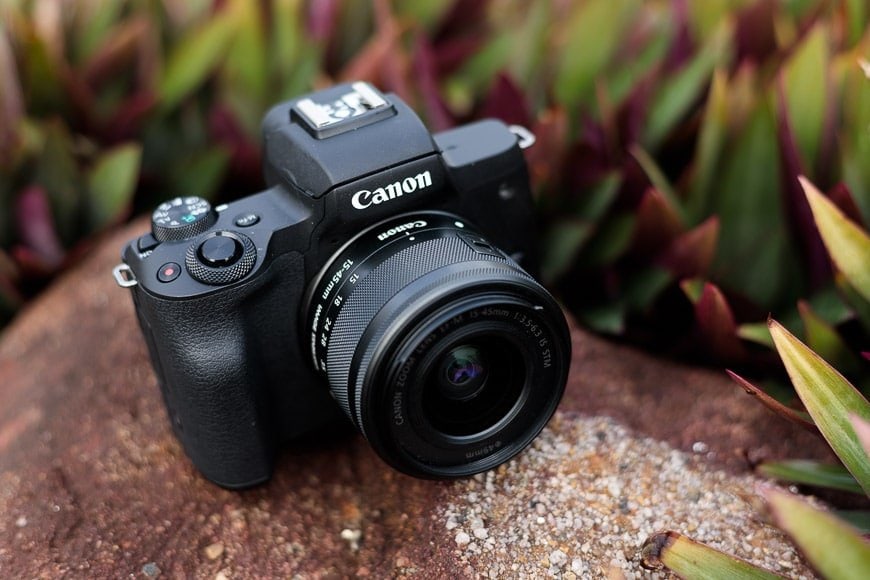
Image: Belinda Crossman for Shotkit
- Excellent still image quality
- Intuitive user interface
- Eye and face detection
- External microphone jack
- Vertical video recording
- Fully articulated LCD
- Compact and lightweight
- No Image Stabilization
- 4K video is heavily cropped
- Short battery life
- No USB charging
- Limited native lenses
Sensor: APS-C | Resolution: 24.1 megapixels | Viewfinder: 2.4M dots | Monitor: 3-inch fully articulated touchscreen, 1.04M dots | Autofocus: 143 points | Max frame rate: 10fps without AF, 7.4fps with AF | Video: 4K at 24p | Weight: 387g (.85 lb)
Suppose this is your first foray into the world of mirrorless cameras and/or you have never used a camera with interchangeable lenses. In that case, the Canon M50 Mark II is the best mirrorless digital camera to get started with.
Stills images come out nicely sharp, with pleasing colors and plenty of contrast. Video footage also comes out sharp with nice color.
Beginners can leave the settings on auto and still get fantastic images. When you’re ready to begin diving into the settings, though, you’ll find the standard Canon menu system both intuitive and easy to navigate.
If you’re brand new to photography, you can turn on the camera’s GUIDE mode, which simplifies things even further – most of the top mirrorless cameras for beginners should have some kind of basic mode like this.
The autofocus on the Canon EOS M50 Mark II is also easy to use, especially considering this is the best affordable mirrorless camera on our list. It’ll tenaciously lock onto subjects without much fiddling.
As part of the upgrade from the original M50, the Canon M50 Mark II now has eye-detection – along with AF support while recording video.
The body of the Canon M50 Mark II is relatively small and lightweight compared to many other mirrorless cameras, making it an easier step up from a smartphone than clunkier cameras (especially comparable DSLRs). It definitely beats lugging around a DSLR camera like the Rebel T8i!
If you’re a social media content creator who primarily works in HD, you’ll love the video on this camera., The 1080p footage is beautiful.
There are also a couple of special features made especially for social media posting:
- The Vertical Video feature ensures that your clips play properly on smartphones.
- The movie self-timer allows for more setup time when you’re working alone and recording yourself.
- There’s even the ability to live stream to YouTube (if you have more than 1,000 subscribers and an image.canon account).
If, however, you’re really needing a camera that works well in 4K, you’ll have to move up to something like the Fujifilm X-T30 II.
The 4K/24p video on the Canon EOS M50 Mark II comes out heavily cropped and you can’t use the camera’s dual-pixel autofocus with it (4K video on the M50 II is contrast-detection only). This makes it more challenging to keep fast-moving subjects in focus. It also affects the eye-detection.
Overall, the Canon M50 Mark II is perfect for those looking for an entry-level mirrorless camera at an excellent price. It hits the sweet spot between easy handling, high performance, and affordability.
In fact, the price is so low – under $700 for the camera body + EF-M 15-45mm kit lens – that it more than qualifies as a budget mirrorless camera as well as the best beginner mirrorless camera.
- User manual
- Best Lenses for the Canon M50 Mark II
- Full Canon Mirrorless Camera List (Updated for Latest Releases)
Fujifilm X-T5 – Best Mid-Range Mirrorless Camera (APS-C)

- Impressive 40MP sensor
- Compact and lightweight design
- Effective in-body image stabilisation
- New tracking and eye detection modes
- Bluetooth and Wi-Fi connectivity
- Improved battery life
- 10-bit 4:2:2 video at 6.2K/30P
- A fun shooting experience
- Burst shooting has a limited buffer
- Autofocus isn’t as good as the competition
- Buffer fills quickly when shooting in RAW
- No battery grip
Sensor: APS-C | Resolution: 40 megapixels | Viewfinder: 3.69M dots | Monitor: 3-inch fully-articulated touchscreen, 1.84M dots | Autofocus: 425 points | Max frame rate: 30fps in crop mode, 15fps full resolution | Video: 4K at 60p | Weight: 557g (1.34 lb)
Fujifilm has continued to cement its reputation as one of the leading camera manufacturers for retro-minded photographers looking for a classic shooting experience.
It’s reflected in the aesthetic design of the Fuji cameras, which continues here with their excellent continuation of the X-T series with the X-T5.
Designed with vintage 35mm camera lovers in mind, the Fujifilm X-T5 is built with the same retro dials and materials that have helped make the series so popular.
This lightweight camera is only slightly larger than the X-T4, with a negligible increase in weight that’s barely noticeable and a pleasingly tactile grip that makes it feel great to hold.
It’s constructed from a combination of metal, rubber, and hard-wearing plastic, looking and feeling durable as well as stylish.
The classic dials and familiar layout make the X-T5 an ideal shooting experience for photo-first users who enjoy working manually, and it’s in this respect that it performs the best as a camera.
It features a crisp electronic viewfinder along with a sharp, two-way tilting rear screen to assist with more awkward compositions, which works in both landscape and portrait orientations.
Fuji has opted to revert from the controversial vari-angle screen found on the X-T4 and X-H2 cameras, believing, arguably rightly, that the current screen style is more appropriate for stills-heavy use.
The shots it produces are typically excellent, with the combination of phase-detect autofocus and auto-exposure via the electronic shutter making it easy to capture great images.
Fuji has made improvements to the autofocus algorithm compared to the X-T4, giving it the ability to detect a wide variety of moving subjects, from humans and animals to planes, trains, bikes, and cars.
While you have to select which of these subjects you wish to track in the menu system, it’s consistently accurate, and the various settings can be programmed into the camera’s custom modes.
Where the Fujifilm X-T5 falls short of its competitors is on the video front, although it does come with some new features, such as the inclusion of 6.2K video at 40p.
It’s in this regard that their decision to return to the previous LCD screen format has left video-centric users pulling their hair out since they’re no longer able to use the screen for monitoring the camera from the front.
With that said, it supports F-Log2, expanding the dynamic range over previous models, and introduces a new menu for Movie Mode that makes shooting video easier than before.
The Fujifilm X-T5’s real strengths are consistent with the older models in this range; that is, it’s a fantastic performer for photographers who want something light, sharp, and fun to use while shooting street photography and other fast-paced action.
The inclusion of new Film Simulation modes and all-around improvements to image quality thanks to the new X-Processor 5 processing power strengthens the Fujifilm X-T5’s position as one of the best APS-C cameras you can buy today.
Fujifilm has continued to cement its reputation as one of the leading camera manufacturers for retro-minded photographers looking for a classic shooting experience.
It’s reflected in the aesthetic design of the cameras, which continues here with their excellent continuation of the X-T series with the X-T5.
Designed with vintage 35mm camera lovers in mind, the Fujifilm X-T5 is built with the same retro dials and materials that have helped make the series so popular.
This lightweight camera is only slightly larger than the X-T4, with a negligible increase in weight that’s barely noticeable and a pleasingly tactile grip that makes it feel great to hold.
It’s constructed from a combination of metal, rubber, and hard-wearing plastic, looking and feeling durable as well as stylish.
The classic dials and familiar layout make the X-T5 an ideal shooting experience for photo-first users who enjoy working manually, and it’s in this respect that it performs the best as a camera.
It features a crisp electronic viewfinder along with a sharp, two-way tilting rear screen to assist with more awkward compositions, which works in both landscape and portrait orientations.
All in all, it’s the best mid range mirrorless camera with an APS-C sensor money can buy right now.
Sony a6400 – Best Entry Level Mirrorless Camera (Under $1000)
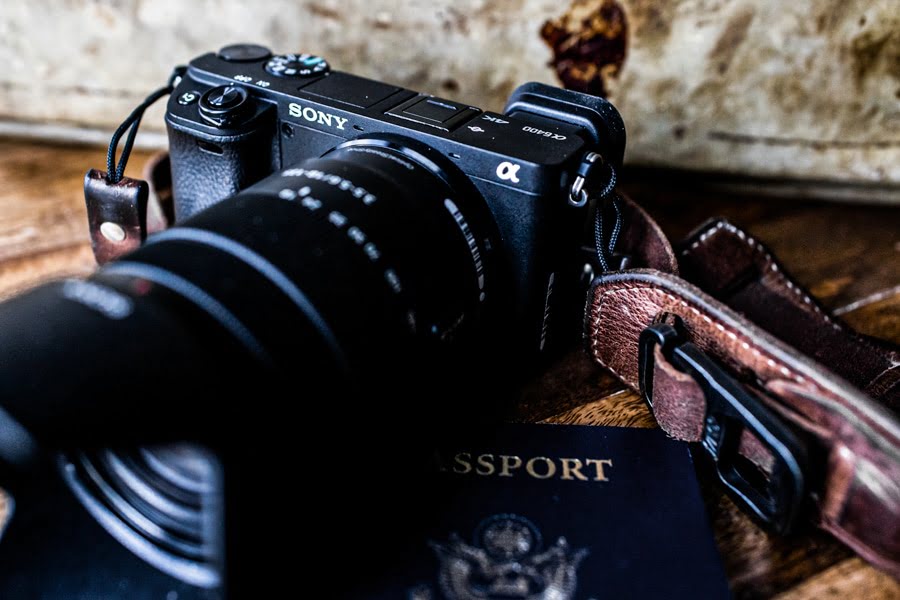
Images: The Starks for Shotkit
- Fantastic autofocus system
- Excellent image quality
- Compact body
- Flip-up screen for vlogging
- Beautiful oversampled 4K footage
- Wide selection of lenses
- Good battery life
- Great value for the $$
- Great as a webcam
- Single SD card slot (UHS-I only)
- No IBIS
- Limited external controls
- Complex menu system
Sensor: APS-C | Resolution: 24.2 megapixels | Viewfinder: 2,359k dots | Monitor: 3-inch tilt-angle touchscreen, 921K dots | Autofocus: 425 points | Max frame rate: 11fps | Video: 4K at 30p | Weight: 403g (.89 lb)
The Sony a6400 gets our vote for the best budget mirrorless camera, sitting midrange in the Alpha lineup.
It’s not flashy, nor the latest model in the long line of Sony a6 APS-C sensor cameras, but it’s a solid performer, has great image quality, and allows you entry into Sony’s well-stocked lens library. It’s also a great value for the money, coming in at less than $900.
One reason we love our Sonys is because of the fantastic autofocus system. The AF in the Sony a6400 is fast, reliable, and works equally well with both stills and movies. The real-time Eye AF makes it particularly easy to lock on to moving objects and nearly instantaneously adjusts to changes in the distance.
Images from the Sony a6400 come out nicely rich, with excellent color and contrast. There’s also plenty of dynamic range to work with, with a native ISO 100-32000 (102400 expanded).
For video shooters, the Sony a6400 offers excellent UHD 4K video quality from oversampled 6K. Frame rates at this resolution go up to 30fps and use the entire sensor area.
(The a6400 is also my favourite mirrorless camera for webcam use due to its excellent autofocus, high-quality video capabilities, forward facing screen and handy microphone input.)
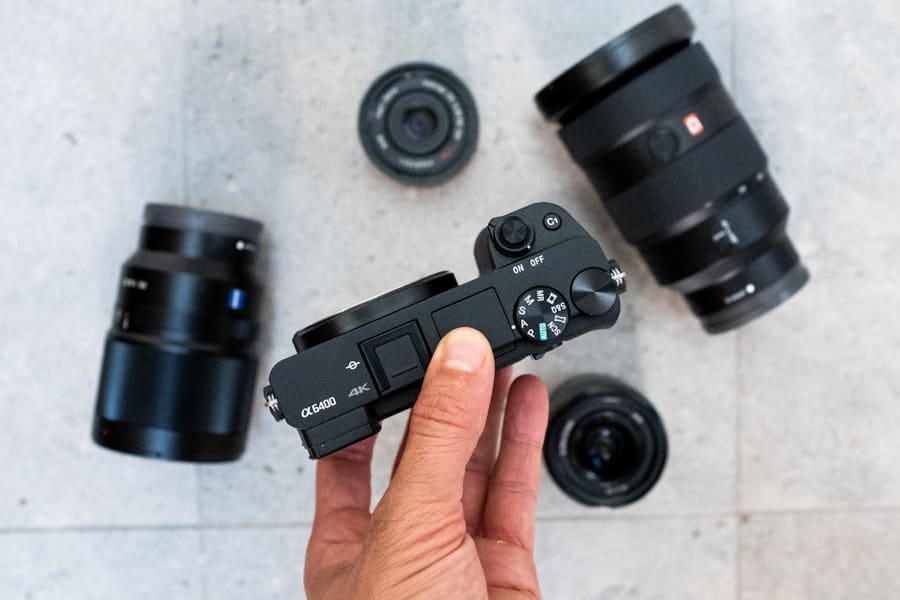
So many great Sony APS-C lenses are available for the a6400.
If you want something beyond 30fps, the 1080p resolution goes up to 120p. You can also shoot slow-motion footage directly in SQ mode.
Other video features include HLG (Hybrid Log Gamma) and Sony’s S-Log2 and S-Log3 gamma modes. The flip-up screen is also a plus, making selfie composition and vlogging easy. There’s also a full-size HDMI port.
Build-wise, the a6400 is definitely a small mirrorless camera – paired with prime lenses you also end up with a fantastically light, portable setup you can take almost anywhere.
The battery life is also excellent, with 360 shots via the optical viewfinder and 410 via the rear LCD screen.
While you can find cheaper mirrorless cameras than the Sony a6400, buying into the Sony ecosystem of E-mount lenses puts you in an excellent position if and when you’re ready to upgrade to a full-frame mirrorless camera.
It’s good enough for semi-professional usage, producing excellent image output from a tiny body.
Overall, the Sony a6400 is an excellent APS-C mirrorless camera at a low cost compared to fullframe models.
It doesn’t have built-in image stabilization and is so small the ergonomics won’t work for everyone, but it can do just about anything the average shooter needs it to do.
Fujifilm X-T30 II – Convenient Mirrorless Camera For Travel

Image: Greg Cromie for Shotkit
- Superb out-of-camera Jpegs
- Excellent autofocus
- Same sensor as the X-T3
- Compact body
- Great burst rate
- High-quality 4k video
- Strong eye/face detection
- Ergonomics could be better
- No IBIS
- Rear LCD doesn’t articulate
- Short battery life
- Single SD card slot (UHS-I only)
- 4K video only 10 minutes at a time
Sensor: APS-C | Resolution: 26.1 megapixels | Viewfinder: 2.36M dots | Monitor: 3.0-inch tilt-angle touchscreen display, 1.62M dots | Autofocus: 2.16 million phase AF pixels | Max frame rate: 30fps cropped, 8fps full resolution | Video: 4K at 30p | Weight: 378g (.83 lb)
The next iteration of the hugely popular Fujifilm X-T30, the Fujifilm X-T30 II, packs a huge amount of power and performance into a smaller, lighter body, making it the perfect traveler’s camera.
It’s my choice of the best hobbyist mirrorless camera in terms of bang for your buck – you get a lot of the features of the flagship X-Series models at a fraction of the price.
It’s also my favorite mirrorless camera for travel due to its portability, range of affordable lenses, and the fact that it’s cheaper than the other models in this guide, making you more likely to take it out with you on holiday.
On the outside, the Fujifilm X-T30 II features Fujifilm’s traditional retro style, with manual dials controlling the ISO, shutter speed, and exposure compensation.
Under the hood of this diminutive digital camera is Fujifilm’s latest 26.1-megapixel sensor and X-Processor 4, both of which also feature in the X-T4 – not the latest mirrorless camera released by the brand, but still an excellent device nevertheless.
While not quite as advanced as the Sony a6400, the X-T30 II’s phase-detect autofocus system is quite snappy and nicely covers the full frame – when comparing Fuji vs Sony cameras, it’s often the case where Sony is superior for AF performance.
You can see the face/eye detection in action below, courtesy of Fujifilm.
The 8fps continuous shooting at full resolution isn’t the fastest, but you can bump it up to 30fps if you’re ok with a 1.25x crop.
The 4K video at 30fps comes out quite pleasing, and if you bump down to Full HD, you can shoot at up to 240p for a 6x slow motion effect.
There isn’t IBIS, 10-bit capture, or any Log modes, so serious movie makers looking for a compact mirrorless might need to look into the Sony a6400.
In fact, Fujifilm X-T30 II and the Sony a6400 are quite similar in price, but the X-T30 II is a bit smaller and lighter than the Sony a6400 and has Fujifilm’s retro body design and unique color technology.
In the end though, if the weight difference isn’t a huge issue, which camera you choose will probably come down to which camera ecosystem you’re looking to enter.
Sony a7C – Best Compact Mirrorless Camera (Full-Frame)

Image: Marc Bergreen for Shotkit
- Full-frame sensor in compact APS-C-sized body
- Fantastic autofocus
- Articulating LCD (swivel screen)
- Excellent image quality
- IBIS
- Real-time tracking
- Mic and headphone sockets
- Best-in-class battery life
- Ergonomics are only so-so
- Electronic viewfinder is on the small side
- 4K maxes out at 30fps
- Uses Sony’s older menu system
- No built-in flash
- Expensive
Sensor: Full-frame BSI-CMOS| Resolution: 24 megapixels |Viewfinder: 2.36M dots | Monitor: 3-inch, fully articulated touchscreen, 921K dots |Autofocus: 693 points |Max frame rate: 10fps |Video: 4K at 30p | Weight: 509 g (1.1 lb)
Want the image quality of a full-frame sensor but a camera that won’t weigh you down? Take a look at the Sony a7C – one of the smallest full-frame mirrorless cameras available.
Feature-wise, the Sony a7C packs all the punch of a Sony a7 III, but adds in better autofocus and somehow fits all this high-end performance into a smaller, lighter body. Pair it with the retractable 28-60mm F4-5.6 lens and you get a remarkably small footprint, yet fantastic photos.
The autofocus system is simply fantastic in this little camera, with the real-time tracking recognizing human heads, faces, eyes, and animals, and locking onto them with ease.
Image quality is as good as the a7 III (it’s the same sensor), there’s burst shooting up to 10fps, and the oversampled 4K video goes up to 30p (including 8-bit S-Log and HLG). It even comes with in-body image stabilization (which is critical in a camera this size).
Of course, you’re going to get some ergonomic tradeoffs once you start handling a body this small: there’s no built-in flash and the built-in viewfinder is definitely on the small side.
It’s also not as easy in hand as a larger camera with its somewhat awkward grip, which is why I’ve called it the best prosumer mirrorless camera.
On the plus side, you get great battery life (740 shots per charge), a fully articulating LCD swivel screen, and mic and headphone jacks.
All-in-all, this little gem makes for a stellar travel companion: it’s easy to keep with you and, like the Sony a7 IV, it will excel in just about any situation.
Sony a7R V – Best for Landscape (Outdoor) Photography and Portraits
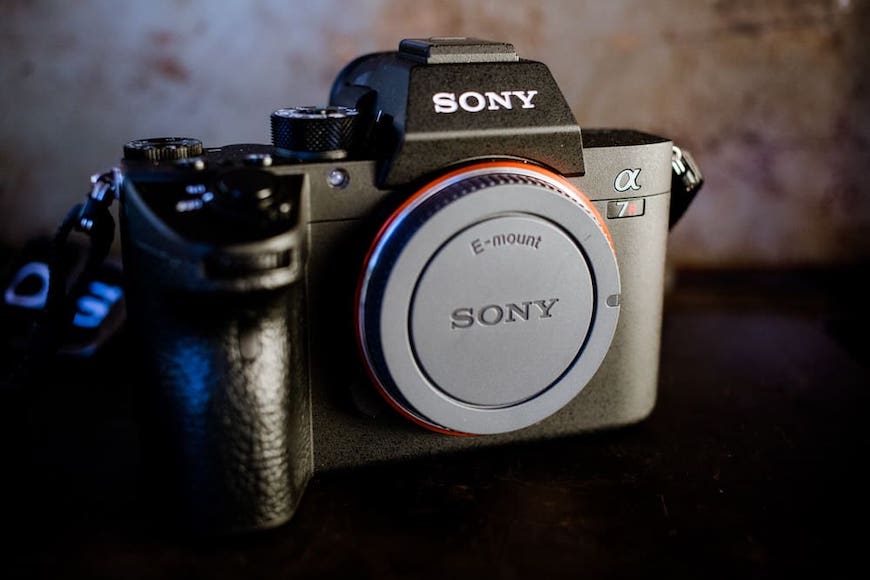
Credit Daniel Stark
- Stabilized 60MP full-frame sensor
- Improved electronic viewfinder
- Best autofocus mirrorless camera with subject recognition
- 8K/24p (cropped) or 4K/60p video
- Excellent AI-based focusing
- Vari-angle rear screen
- Enhanced IBIS
- Superb ISO handling
- Expensive
- Limitations on video
- Multi-shot mode requires Sony’s software to stitch
Sensor: Full-frame | Resolution: 61 megapixels | Viewfinder: 9,43M dots | Monitor: 3.2-inch tilt-angle touchscreen, 1.44M dots | Autofocus: 693 Phase + 425 Contrast | Max frame rate: 10fps with full AF / AE Tracking | Video: 8K at 24p/4K up to 60p | Weight: 723 g (1.96 lb)
As with the Fujifilm X-T5’s various improvements over the previous iteration, Sony’s A7R V has undergone a number of improvements over the A7R IV.
While it is built around the same 60MP BSI CMOS full-frame sensor as the Mark IV, the addition of more powerful processors gives the new model significantly more clout.
Perhaps the main area that benefits from this ramped-up processing power is autofocus, which offers far better subject recognition that goes well beyond human subjects.
A range of vehicles and animals can now be identified and tracked with ease, opening up the potential for shooting all manner of subjects with rapid AF.
Users now have the option to tailor the specific parameters for each of these subject categories to fine-tune how tolerant and sensitive AF is while tracking.
The upgraded algorithms extend into the Sony A7R V’s in-camera stabilisation of up to eight stops, which works in combination with Sony’s native lenses for a rating of 8.0EV in industry-standard tests.
Image quality is excellent whether shooting photos or recording videos, although to optimise the end results, it’s best to use lenses from Sony’s G and GM ranges.
While the design is similar to the A7R IV, there’s an improved 4-axis 3.2-inch articulating screen, making it a more viable option for video content creators than its predecessor.
Sony has also improved the viewfinder, delivering a high-magnification 0.9x optics for a bigger view of the frame, along with a 9.4 million dot display.
The body comes in an attractive matte black finish and magnesium alloy for the chassis, with dust and splash protection along with the option to close the shutter down when changing lenses.
The previously marked, dedicated EV control is now unmarked, and while it is still set to EV as default, it can be easily swapped out for another function.
There’s also a new toggle beneath the Mode dial dedicated to Stills/Movie/Slow Motion, which is a nice new touch that may speed up the workflow for some users.
Videographers and content creators can enjoy the inclusion of 8K video – albeit cropped – as well as introducing S-Log3, S-Cinetone and HDR formats that were lacking from the A7R IV.
This makes the Sony a7R V a wonderful camera for video content creators and filmmakers who want to really fine-tune their footage in post, with a more dynamic range to adjust colours and push blacks.
The aforementioned improvements to the autofocus also ensure a far more accurate and reliable experience with video, tracking subjects accurately even in busy scenes as they move around the frame.
With that said, the benefits from the updated in-body image stabilisation aren’t as apparent when shooting video footage, with rapid movements and other jolts prone to negatively impacting the footage.
There are also issues with the rolling shutter when shooting in 8K and full-frame 4K, although these issues can be avoided by shooting in APS-C mode.
The Sony A7R V brings plenty of reasons to the table to earn a strong recommendation, with outstanding image quality and all-around improved engineering combined with game-changing AI-based autofocus and stabilisation.
Panasonic Lumix GH6 – Popular Mirrorless Camera For Video
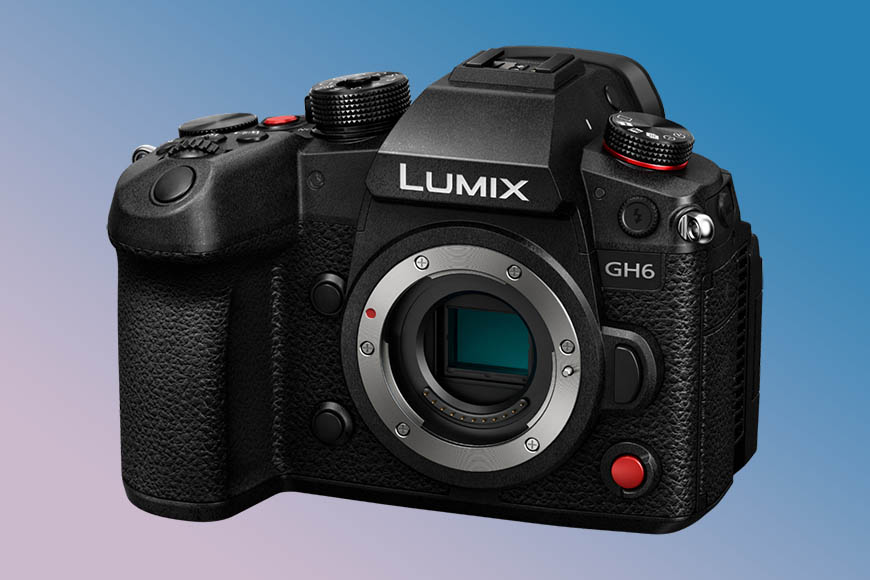
- Ergonomics designed specifically for filmmaking
- Unrivalled video toolkit
- Internal ProRes 422 HQ support
- Best-in-class image stabilization
- Subject recognition for people and animals
- Weather-sealed
- Active cooling for long-form recording
- Only has phase detection autofocus
- Battery life could be better
- Excessive noise when lifting shadows in RAW stills
- Cooling fan is noisy
Sensor: Live MOS Micro-Four-Thirds | Resolution: 25.2 megapixels | Viewfinder: 3.68M dots | Monitor: 3-inch free-angle tilting touchscreen, 1.84M dots | Autofocus: 315 Contrast | Max frame rate: 14fps | Video: 5.7K at 30p; 4k at 60p | Weight: 823 g (1.8 lb)
When one thinks of video, one doesn’t usually think of micro four-thirds cameras, but the Panasonic Lumix DC-GH6 bucks the trend. It was designed specifically for use as a video camera, both in the build and in feature set, and it beats out all other video cameras in its class.
While the still image options are just passable (mostly due to the phase detection autofocus and sub-par RAW files), for videographers the GH6 is simply fantastic.
Sure, the micro four-thirds isn’t the largest sensor size, but the Lumix DC-GH6 manages to hold its own in terms of resolution performance, particularly in its All-I codecs, which top out at 10-bit 4K/60p 4:2:2. It also produces footage far beyond any of its competitors when shooting at 4K/120p.
One would expect the GH6 to perform poorly in low light given its micro four-thirds sensor, but the Lumix GH6 actually rivals the a7S III for detail and high ISO noise management (at last up until ISO 12,800).
As mentioned before, the autofocus is only phase detection, but comes with subject recognition (both human and animal) and works on third-party micro four-thirds lenses as well.
But it’s in the video department that this little micro four-thirds camera excels. The list of recording options is over the moon – at least for a mid-range mirrorless camera.
Headliners include Apple ProRes 422 and ProRes 422 HQ recording (currently on at 5.7K resolution in 24p, 25p or 30p, but soon also to include 4K video and FullHD via firmware update). There’s also the ability to record in full V-log.
As far as physical recording is concerned, the Lumix GH6 has two card slots: one for UHS-II SD, and one for the more advanced CFexpress Type B card.
It can record Cinema 4K footage at 60p to both its cards simultaneously, as well as externally via HDMI to a recorder. A firmware update coming soon promises to add recording to a solid state drive as well.
Video shooters will also love:
- the sub-video record button on the front, as well as on the top plate
- the dedicated audio management button in place of the picture profile button
- the anti-rotation pinhole in front of the tripod thread
- the Lumix Luminance Spot Meter, Waveform and VectorScope
Suffice it to say, that even the most passionate and unique filmmaker should find what they need in this little camera.
The Lumix GH6 also comes with an excellent 5-axis in-body image stabilization system rated at 7.5 stops, eliminating the need for a gimbal in many situations.
Honestly, one would be hard-pressed to find a digital camera with a more comprehensive list of high-quality recording options – especially for under $2000.
For video, it outperforms most other mirrorless cameras, including its main micro four-thirds competitor, the Olympus OM-1. Even full-frame cameras like the Canon EOS R6 can’t really match it in the video department.
That being said, the Lumix GH6 is a bit lacklustre in the stills department, so if you need a true hybrid camera you’d best look elsewhere. However, we stand by our decision of it being the top mirrorless camera for video and think you’ll love too.
Canon R6 – Great Option for Wedding Photography
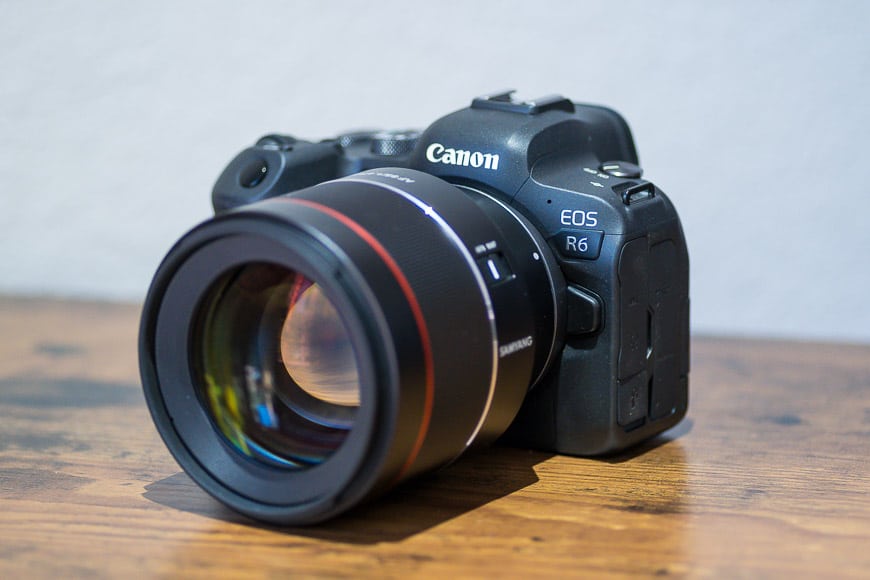
Images: Marc Bergreen for Shotkit
- Excellent ISO range and low-light performance
- Max burst speed of 20 fps
- 8-stop IBIS
- Solid build quality
- ISO range of 100-102400; expandable to 204800.
- Lacks tactile controls
- Only 20 MP
- Expensive
Sensor: Full-frame | Resolution: 20.1 megapixels | Viewfinder: 3,690K dots | Monitor: 3-inch fully-articulated touchscreen, 1.62M dots | Autofocus: 273-points | Max frame rate: 20 fps electronic/12 fps mechanical| Video: 4K at 60p | Weight: 680 g (1.5 lb)
Wedding photographers need a quick, high-capacity camera that can perform across a huge range of photographic challenges, all while cranking out excellent images. The Canon EOS R6 does all of this and more.
For a full-frame camera, the Canon EOS R6 is nicely compact, yet well-balanced. Its solid build can hold up to even the rowdiest wedding.
The image quality of the Canon EOS R6 will please even the pickiest of clients, and the superb ergonomics will make long shooting sessions much easier on the photographer. It feels great in the hand, key controls are well-positioned, and the buttons are all customizable.
The R6’s full-frame sensor is only 20 megapixels, more than enough for the vast majority of wedding photography applications unless you’re needing a huge billboard of an image or tend to highly crop your photos.
In fact, the low-megapixel count is actually an advantage to many wedding photographers, as the small file size of the photos makes it much easier to process and store the literally thousands of images you’re likely to end with. (It’s one reason the Canon EOS R6 is often favored over the Sony a7IV – it’s remarkably easier to quickly sort through 20-MP files than 33-MP files.
Also, the Canon EOS R6’s fantastic ISO range and low-light performance easily compensate for the low megapixel count. There’s also 8-stops in-body image stabilization, to help with landing those tricky, handheld shots.
- Canon EOS R6 controls are intuitive and accessible.
- Canon EOS R6 + Canon 24-70mm f/2.8 RF
- Canon EOS R6 back screen rotates completely to face forward.
- Canon EOS R6 + Samyang 85mm f/1.4 RF | 1/8000 f/2.2 ISO 800
Need to get some action shots of the couple dancing? No problem! The Canon EOS R6 has burst shooting up to 12 fps with its mechanical shutter and up to 20 fps with its electronic (silent) shutter.
The Dual Pixel AF II autofocus system is a solid performer and comes with machine learning and subject tracking. There’s not much need for fine-tuning – it just works.
On the video side of things, the Canon EOS R6 comes with offers 4K video up 60fps, and 1080p up to 120fps. There’s also 10-bit 4:2:2 with Canon Log or HDR PQ. Internal recording is available in all formats, and all have autofocus. Hybrid users will be pleased to find that switching between video and stills is fairly quick.
There are a couple of caveats, though. Any camera use can eat into its 40-minute limit. In addition, the rolling shutter can sometimes affect the footage.
Still, there’s not much else to complain about with this excellent little full-frame camera. It can do just about everything the Canon EOS-1D X III can do, yet in a compact, mirrorless body.
It also has a very similar dynamic range to the more expensive EOS R5, which we think is overkill for most photographers.
The R6 is simply one of the most popular mirrorless cameras for wedding photographers, as well as anyone else looking for a high-performing mid-range mirrorless camera in the RF-lens-mount world.
Sure, it may not be the absolute best Canon mirrorless camera with the formidable R5 taking the top spot, but for the money, it can’t be beaten.
Nikon Z6 – Best Value Mirrorless Camera
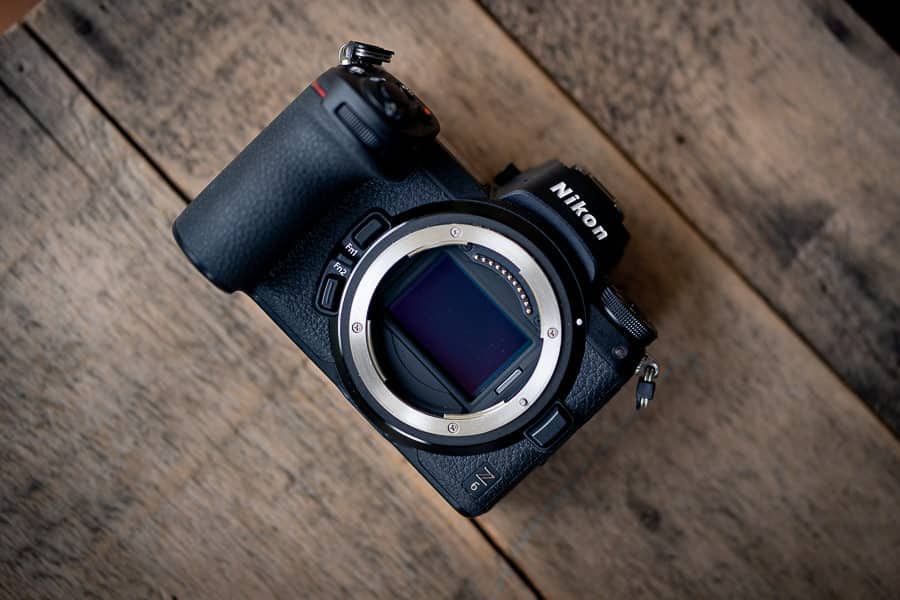
Sensor: Full-frame | Resolution: 24.5 megapixels | Viewfinder: 3,690K dots | Monitor: 3.2-inch tilt-angle touchscreen, 2,100K dots | Autofocus: 273-points | Max frame rate: 12fps | Video: 4K at 30p | Weight: 675 g (1 lb 7.9 oz)
- Amazing value for money
- Great ergonomics
- Excellent high ISO performance
- 5-axis stabilization
- 12fs burst shooting
- Super high-res EVF
- Stunning 4k video
- Limited buffer
- Limited native lens selection
- XQD card format is expensive
- Average battery life
Nikon’s answer to the amazing Sony mirrorless cameras came out a few years ago with the launch of the Nikon Z6 and the 46MP Nikon Z7.
Nikon has since released newer models, but with the significant price increases of the Z6II and Z7II, we’ve chosen the original Z6 as our best budget mirrorless camera of the year.
While the Z7 series is more of a landscape and portraiture camera, the Z6 is – like the Sony a7 III – an impressive, more affordable all-rounder. In fact, it’s probably Sony’s closest competitor – see our comparison: Nikon Z6 vs Sony a7 III.
The Nikon Z6’s full-frame 24.5-megapixel sensor ensures high resolution images without going overboard in file size, while the native ISO range of 100 to 51,200 to (expandable 50 to 204,800) gives it a dynamic range that rivals the class-leading mirrorless cameras.
The Z6’s build quality is top of the line, with the ruggedness we’ve come to expect from Nikon bodies. In fact, it’s still one of the best-built mirrorless full-frame cameras on the market right now, with great ergonomics to match.
Nikon camera owners will find its controls and menus quite familiar, as they mirror Nikon’s DSLR line. There’s even a top plate LCD that DSLR shooters will readily appreciate.
One thing that is quite different, though, is the lens mount. Nikon ditched the old F-mount in lieu of the new Z-mount, which is designed to let in more light to the Z-series sensors.
There still aren’t many native lenses available for either the Z6 or Z7, but luckily most F-mount lenses will work just fine with the new FTZ mount adapter, although at around $250 it’s not cheap.
Another thing that stands out in the build of the Nikon Z6 is the fantastic electronic viewfinder. It’s crisp, clear and boasts an exceptionally high resolution.
The downside of this is that the 60Hz refresh rate is a bit slow, especially when shooting in burst mode. The touchscreen is also quite beautiful, but for some reason lacks touchscreen autofocus while you’re looking through the viewfinder.
Speaking of autofocus, the Z6 keeps up with more of the recent mirrorless cameras in most situations, although loses out in low light. It also does a reasonably good job of tracking subjects, both at 5.5 fps (with live view) and 9 fps (no live view).
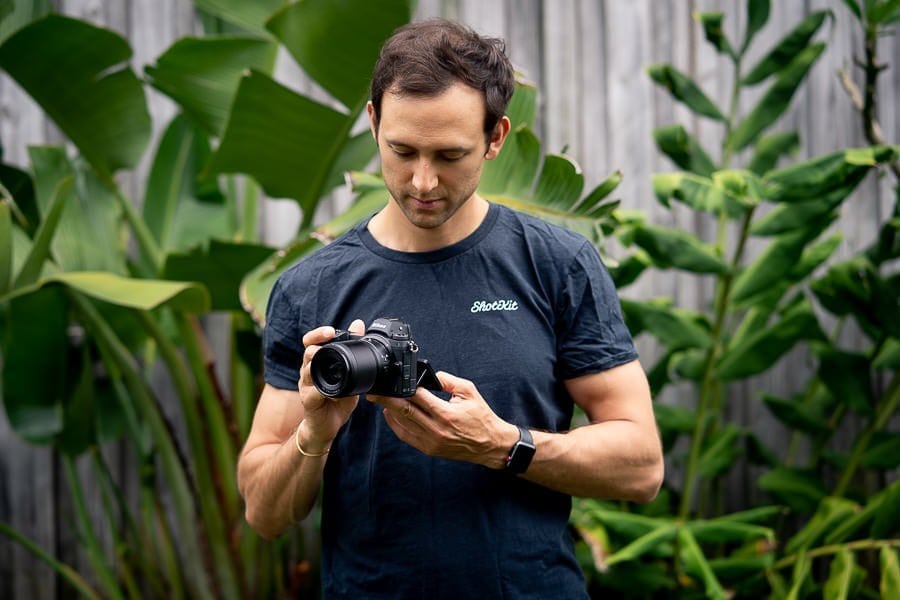
The tilting LCD screen of the Nikon Z6 makes it easy to compose from above or below.
As far as movie footage is concerned, no disappointments here. The Z6’s 4k movie footage is simply stunning, with frame speeds up to 30p for 4K UHD, as well as Full HD video in 60p and 120p slow-motion in HD.
As expected, the Nikon Z6 also comes with plenty of capture tools, including 10-bit Log output.
Like the Sony a7 line, the Nikon Z6 comes with effective 5-axis image stabilization, allowing you to handhold it in low light and still achieve steady shots, even at 0/5~1 second shutter speeds!
One thing of note is that Nikon opted to go with a single XQD card slot rather than dual card slots. That’s a bit of a gamble, as at the moment there aren’t a lot of XQD cards available, and not having an immediate card backup may deter uses for professional photography.
Still, if you’re a Nikon lover and especially if you’ve already invested in Nikon glass, the Nikon Z6 is a great mirrorless option, and an absolute bargain right now. It keeps up with the Sony a7 III in many respects and exceeds it in build quality and EVF quality.
The Z6’s autofocus system lags a bit behind the a7 III’s and the battery life isn’t quite up there, but in general, it’s still a solid full-frame mirrorless camera that every Nikon lover should consider, especially at this price point.
What are the Advantages of a Mirrorless Camera?
- Less weight and bulk – Mirrorless camera bodies and most of the lenses made for them are smaller and lighter than corresponding DSLR cameras. While the difference may not be huge, if you’re someone who travels with a camera, every last ounce can make a difference after a long day of hauling gear around. On the flip side, adding a long zoom lens to a small body can make the setup a little unwieldly.
- Manual focus is much, much easier – Because you can see exactly what you’re doing, it’s extremely easy to manually set an accurate exposure and make sure you’re image is in focus. There are also tools like focus peaking and focus point magnification available.
- Live Histogram – With a mirrorless camera, you can see the histogram and overall exposure before you take the picture. While some DSLRs can show a histogram in Live Mode, none can show a live histogram in the viewfinder as you’re changing the camera settings.
- Exceptionally High Burst Rate – Most mirrorless cameras can leave DSLRs in the dust when it comes to burst rate.
- Silent Shooting – Mirrorless cameras can switch to “silent mode” and use their electronic shutter only. This means you won’t be interrupting the moment when doing wedding or event photography in a quiet space.
- Better Autofocus – Most mirrorless cameras have a high number of focus points, with the focus points much more spread across the entire frame than what you’ll find on an average DSLR.
- Longer Life Span – The life span of a DSLR is pretty much tied to the life expectancy of its shutter. With mirrorless cameras, because there’s no mirror to flip up and down, the shutter count does not matter as much.
Should I switch from DSLR to mirrorless?
Mirrorless cameras are the wave of the future: almost all of the R&D funding is going in that direction. It’s quite likely that DSLR development won’t keep up nor continue much into the future.
That being said, if you’re happy with your DSLR setup, then there’s no reason to switch to a mirrorless camera – at least any time soon.
Just beware switching over to a mirrorless camera won’t necessarily make you a better photographer. Sure, it’s much easier to shoot in manual mode and get your exposure correct, but the elements of creating a good photo haven’t changed.
You should also read the results of our survey to find out what cameras photographers use to see how many use each main format of camera.
What Should I Look for When Buying a Mirrorless Camera?
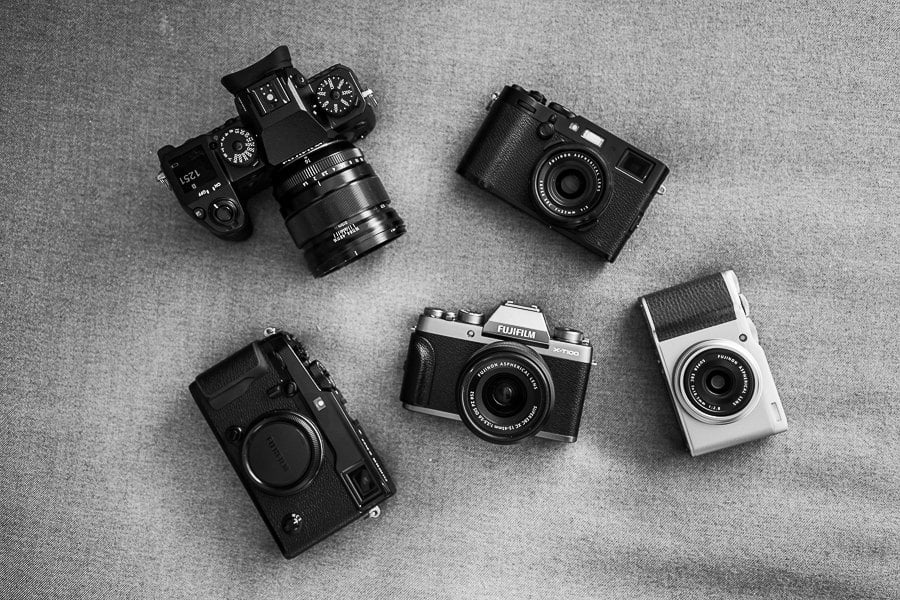
Fujifilm mirrorless cameras
- Sensor size – Sensor size makes a huge difference to image quality, especially when shooting in low light, but there are some trade-offs. For example, APS-C cameras tend to be smaller and lighter than full-frame cameras. They’re also less expensive.
- Budget – At the end of the day, which mirrorless camera you choose will ultimately come down to what you can spend on it…and on the lenses that you want to use on it. If you’re on a budget and can’t yet buy the camera you want, choose a cheaper version with the same lens mount. That way all your lenses can migrate over to the new camera.
- Resolution – These days it’s pretty common to find cameras offering 24 megapixels., which is more than enough for most applications. You likely won’t need more if you’re not planning on printing out your images. Also, keep in mind that higher resolutions provide better image quality, but also huge files.
- Lens Options – In many respects, the glass you buy will be more important than the camera – at least if you really want quality photos. If you see yourself content to shoot with a kit lens for a while, then buying into any ecosystem will be fine. If, however, you’re excited to invest in great glass and/or want flexibility in what you can choose, you’ll want to invest in a camera with a lens mount that has a great lens library (like the Sony E-mount).
- Autofocus – The autofocus on mirrorless cameras has really changed the game, especially when it comes to moving subjects. Make sure that the camera you want to buy has face, eye, and subject detection if you’re planning on doing any action or event photography.
- Burst Rate – Burst rate isn’t a big deal if you’re shooting static subjects. If your subject matter contains a lot of moving subjects, however, you’ll want at least a 10fps burst rate.
- Video Features – If you’re planning on using your new camera for video, take a look at the different recording options offered and make sure they’re the ones you’re planning to use now AND grow into. (i.e. maybe you haven’t shot a lot of slo-mo yet but might want to get into it in the future.) This includes physical features like a full-size HDMI port.
- Ease of use – what’s the easiest mirrorless camera to use? It depends on individual preferences and needs, but finding a model that fits your hands and has well-placed buttons is the first step. A MILC with plenty of customization options will also let you further adapt the camera to your needs.
What accessories should I consider buying for a mirrorless camera?
Some popular accessories you can consider to make your life shooting with a mirrorless camera more enjoyable include:
- Different lenses
- Memory cards
- Small camera bag
- Tripod
- External flash
- Battery Grip
- Remote Control
- UV Filter
While Sony mirrorless camera accessories and other brand-specific products are available, you’ll find more variety from third-party brands.
Sony Mirrorless Camera Lineup
Here’s a comparison table of the most recent Sony MLCs and their release dates:
| Model | Megapixels | Dimensions (W x H x D) | Weight (g) | Release Date |
|---|---|---|---|---|
| Sony A7R V | 60MP | 131 x 97 x 82 mm | 723 | October 2022 |
| Sony A7 IV | 33MP | 131 x 96 x 80 mm | 659 | October 2021 |
| Sony A1 | 50.1 MP | 136.9 x 97.3 x 81.0 mm | 699 | January 2021 |
| Sony A7R IV | 61 MP | 126.9 x 95.6 x 73.7 mm | 665 | July 2019 |
| Sony A7S III | 12.1 MP | 128.9 x 96.9 x 80.7 mm | 699 | July 2020 |
| Sony A7 III | 24.2 MP | 126.9 x 95.6 x 73.7 mm | 650 | February 2018 |
| Sony A6100 | 24.2 MP | 120.0 x 67.0 x 59.7 mm | 396 | August 2019 |
| Sony A6600 | 24.2 MP | 120.0 x 67.0 x 69.9 mm | 503 | November 2019 |
| Sony A9 II | 24.2 MP | 137.0 x 96.9 x 74.0 mm | 663 | November 2019 |
| Sony A6400 | 24.2 MP | 120.0 x 67.0 x 59.7 mm | 403 | January 2019 |
| Sony A9 | 24.2 MP | 137.0 x 96.7 x 63.0 mm | 673 | April 2017 |
| Sony A7R III | 42.4 MP | 126.9 x 95.6 x 73.7 mm | 657 | October 2017 |
What’s the cheapest mirrorless camera?
Some brands to consider for budget-friendly mirrorless cameras include:
- Sony Alpha series: Specifically the older models like the Sony a5000 or Sony a5100.
- Canon EOS M series: Cameras like the EOS M100 or EOS M50 (although the M50 is a mid-range camera, it’s sometimes available at a more affordable price).
- Fujifilm X series: Older models like the X-A5 or X-A7 might be priced lower.
- Panasonic LUMIX series: Models like the Panasonic LUMIX DMC-G7.
- Olympus OM-D series: Older models, in particular, can be more affordable, such as the E-M10 Mark II or III.
- Nikon Z series: The Nikon Z50, being an entry-level model in the Z series, is more affordable compared to its high-end counterparts.
Top Mirrorless Cameras FAQ
What is a mirrorless camera?
A mirrorless camera doesn’t have any moving mirror mechanism that’s found in DSLRs. This allows it to be smaller in particular and offers features such as electronic viewfinders, faster burst shooting, and real-time exposure previews.
Which brand has the most popular mirrorless camera?
In our opinion, Sony consistently makes the best full-frame mirrorless cameras. They have many more years of development under their belt than Canon or Nikon. For APS-C cameras, Fujifilm makes the popular mirrorless cameras.
Why are mirrorless cameras better?
Mirrorless cameras are smaller and lighter, with image quality that’s just as good as same-class DSLRs. Because they don’t have a mirror, they have a much faster frames-per-second rate than other cameras and even have a silent shooting mode. That’s something a DSLR camera just can’t do, yet it is often needed in quiet settings.
Do professionals use mirrorless cameras?
Yes, many professionals prefer using mirrorless cameras over DSLRs.
What are the disadvantages of mirrorless cameras?
The biggest disadvantage is that the sensor on a mirrorless camera is fully exposed when you change lenses. (On a DSLR, the mirror partially protects the sensor.) Also, many mirrorless cameras have sub-par battery life when compared to DSLRs.
Is DSLR still worth buying?
DSLRs are still worth buying if you already have a lot of EF and F-mount lenses or can get them inexpensively. Also, the prices of DSLRs are going down considerably – you can get some amazing deals now that mirrorless cameras are all the rage. Beyond this, they feel better in the hand (especially if you have large hands).
Is mirrorless the future?
Undoubtedly, mirrorless cameras are the face of things to come. It’s where the major camera manufacturers are putting in the bulk of their R&D and also where consumers are putting their dollars, which in turn influences further development.
What is the lightest mirrorless camera?
The Panasonic Lumix GX850 weighs approximately 329g (11.6 oz), and the Sony a6000 is 344g (12.1 oz) with a battery and memory card. The Sony a6000 is also the best cheap mirrorless camera.
What is the cheapest Fujifilm mirrorless camera?
The X-T200 can be found for around $700 and features a 24.2-megapixel APS-C sensor, a touchscreen LCD, and 4K video recording capabilities.
What mirrorless camera is best for family photography?
Any camera can be used for family photography, but if you need something small and intrusive for candid shots, the Fujifilm X-T30 or Sony a6400 is ideal. Pairing these cameras with a zoom lens will help you maintain adequate distances from families, ensuring they don’t get nervous in front of you.
Final Words
Choosing a mirrorless camera in 2024 isn’t an easy task, but hopefully, our guide has helped you make the right decision based on your needs.
Mirrorless cameras are fun and exciting to use, so they encourage you to get out and take more photos.
Feel free to leave a comment below with your questions and recommendations, and I wish you happy shooting!

An all round powerhouse mirrorless camera, improving on its predecessor (last year's winner), with better autofocus, image quality, ergonomics and features.







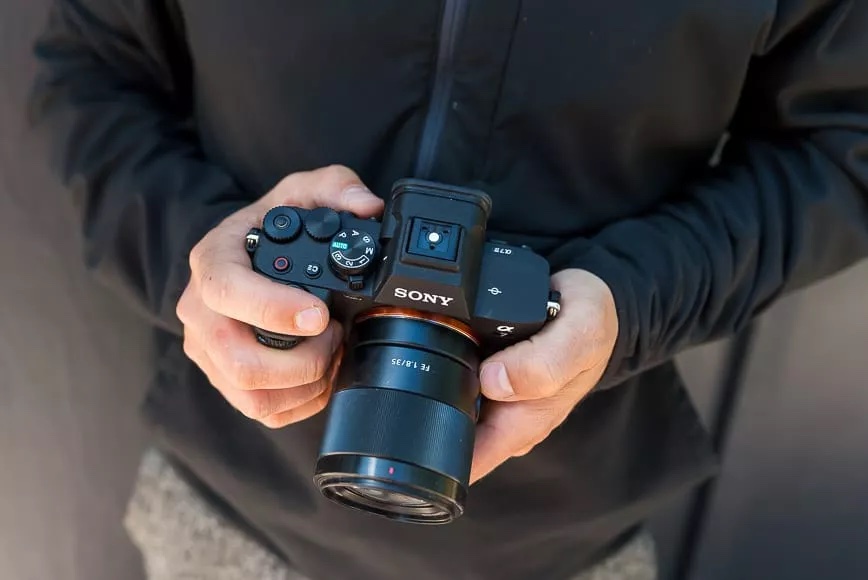

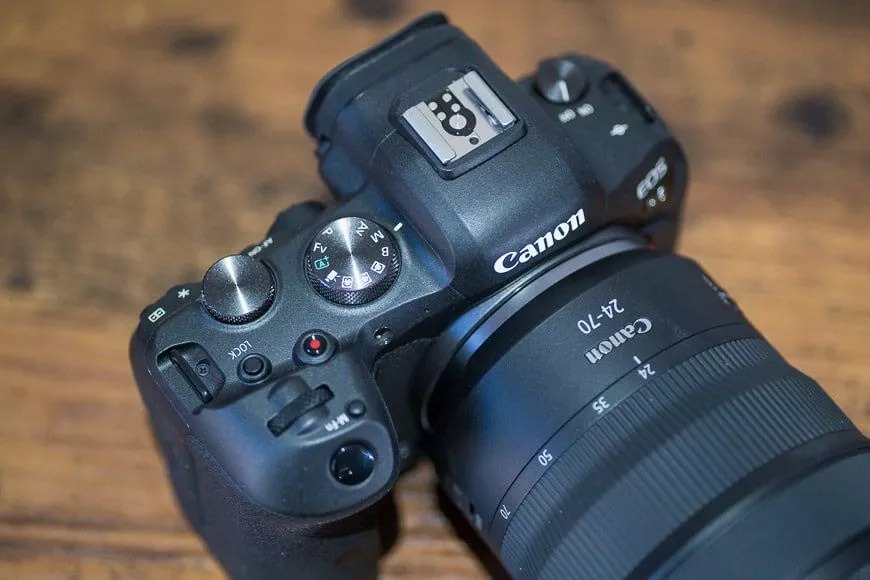
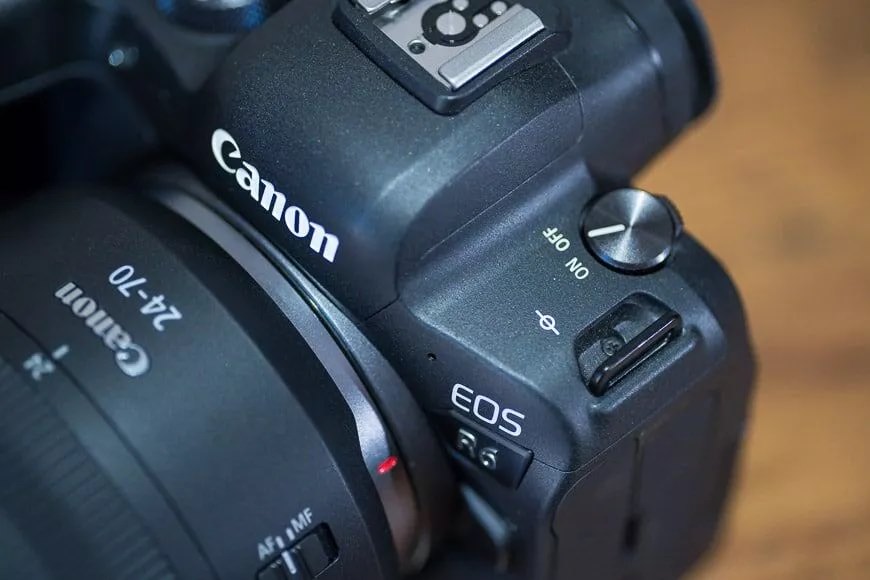









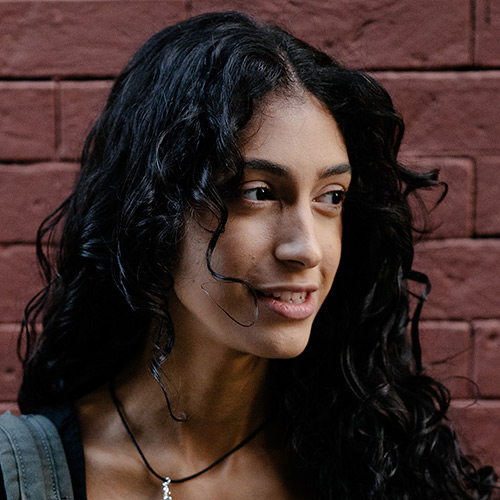




That was so amazing.
I’ve wrote “why I choose mirrorless instead of DSLR on my blog. In my opinion, at least we have the latest technology that developed and keep improve on our hand. Anyway, I agree that mirrorless now is leading in performance if we compare to 4 or 5 years ago. Thank’s for share, Usnea!
I loved your article! You said same things my local photographer said, that he loved the Mirrorless Sony Camera’s. But, if you please a little bit more advice. I have a 10 yr old Canon PowerShot SX20 IS.
It’s ready for the bone pile. I want to shoot faces close-ups mostly shoulders up in black and white. Be outside in the Midwest weather. I’d edit them with light or photoshop. Putting them on line in a story.
My question Mirrorless camera, lens, is RAW ok. Or? And would you buy a flash or stick with the built in? I’m not a beginner but I’m far from advanced.
I’m can’t afford to make a mistake in buying the wrong one. Thanks, but I’m like a lot of people confused….
Sorry Taylor, I don’t understand your question – please can you rephrase it?
Hi there,
This was such an interesting article! Thank you! I am having a hard time deciding what brand/camera to go for, as I have been trying out all different kind of cameras since my own equipment got stolen a year back.
I am shooting professional, and want to expand the photography part of my business. Mostly events, yoga sessions, portraits and travels/nature/street. I have been looking at the Fuji xt-4 for a while, but I am a bit worried the crop sensor / not being a full frame camera – won’t be “enough”.
Considering Nikon Z6ii – Canon R/ or R6 – or Fujifilm. I am somehow not the biggest Sony fan, not sure why.
Which would you go for? I would love to hear your recommendations.
Thank you so much.
Hey Charlotta – if budget isn’t an issue, out of the ones you’ve mentioned there, my preference would be the R6. The only major consideration is if you’re happy to spend more on the Rf lenses (and don’t mind about their size/weight). Otherwise, my recommendation would be the one at the top of this article – the a7III. Hope that helps!
Hello Mark. I’m in a quandary. I want to film BIF. I’m struggling between EM1 mk3, A7iii, A6600 and even EM1X. Any input? My inclination is olympus because of their pro lenses.
What’s BIF, Mark? Regardless, this article is more for stills photography rather than video. I may still be able to help, though!
This is such a great and helpful article! I have been looking to step into a camera role for some of the work I have been doing as of late and am curious if you would be able to help recommend a mirrorless for dynamic fashion photography and portraiture, possibly some short video work as well (like 10-15 second edited clip work). I am having a tough time figuring out what to choose from this list, as I am an amateur at photography and am not sure what I may need.
I work mainly in fashion marketing and advertising and need a good camera for crisp, clean shots for dynamic movements, along with possible landscapes for distance shooting, and something that is really good with exposure for contrast in portraiture and to show detailed linework (and sometimes pores for closeup shots, but that may rely on the lense type used as well).
Thank you so much for your help!
Hi Phillip, my recommendation is the Sony a7III – it’d be perfect for what you describe, but the lenses you choose are just as important. Good luck!
Brilliant article, thank you. Still don’t know which one to get!!
haha thanks Louise! Yeah it’s still a tough choice… and we’re updating this article with new models too, to add to the confusion! My recommendation is still the a7III ;-)
As I type, I’m eagerly awaiting my Canon R5 which is due to be delivered today. It will be my first mirrorless camera and I can’t wait!
Hello!
I am a beginner mom photographer who would like to get great shots of my middle school and high school age kids on the soccer,baseball and lacrosse fields. I do not need the top of the line most complex, but would like a great camera that will last me and not have me wanted to upgrade.
Do you have a mirrorless suggestion for primarily outdoor sports photos? Thank you so much!
Hey Liz, for sports in decent light if you’re on a budget, look for an ‘APS-C’ sensor camera – they’re more affordable than ‘full frame’, and give you some extra reach on your lenses due to their ‘crop factor’. If this is all Greek to you, check out this camera buying guide: https://shotkit.com/camera-buying-guide/
Hi!
I’ve been in love with my Nikon’s for 30 years, but as I was looking for an new supertelezoom (300+) I realized that my D90 did not give me many interesting choices. So, at this moment, I’m seriously considering leaving the Nikon family. The DSLRs seem to be a bad choice when looking for a new system, mirrorless seems to be the future. And Nikons may be good, but lens alternatives are poor and very expensive… I mainly shoot nature and sports, video is not very interesting to me (I find the iphone good enough). Finding a mirrorless camera that can handle both nature and sport seems hard if not spending a fortune? Especially since I find most mirrorless cameras too small as well. Still I want to go for mirrorless since it seems oldfashioned to buy a new dslr… Please help me with a suggestion of a good choice?
Hey Jesper, some of the new Canon/Nikon mirrorless bodies are shaped more like DSLRs – the Canon EOS R series and Nikon Z series, for example. They are, however, expensive.
FYI your A7III listed specs are not totally correct
Actual a7iii EVF & LCD resolution are much lower than what you have listed, and the AF has more phase detect points that you have listed.
Thanks for spotting the typos, Jim!
Thank you for all of those informations! It is helping me a lot.
I must admit that i am still not sure what to choose.
I am a fashion designer and need this camera for taking beautiful pictures of my products, fashion photoshoot inside and outside and a bit of informative videos as well on my products.
It will be the first time ever that i will buy a camera.
Could you please help me to make a decision?
Thank you so much for your time
Hi Josefa, thanks for the comment! Any of these cameras could do a great job with fashion photoshoots/videos. I’d need a bit more information from you to make a more specific recommendation. Why don’t you join the private Shotkit Facebook group and we can chat more there :-)
This information is great. Thank you.
For a first camera would you recommend the Sony a6000 or the Olympus OM-D E-M10 Mark III?
Hmm tough one, but I’d say the Olympus as it’s newer!
Yes, The only dilemma for me is that working with light, ie. flashes and strobes, is not yet “up to speed”. When this comes around, I’ll jump in with a Sony for sure. I need to be able to bounce light around at weddings, Thanks again buddy.
What do you feel is lacking, Aman? I use Sony with flash at every wedding…
As you recommended, I bought Sony a7III. Its really a cool camera. Your choice is perfect for me. Thanks for sharing a valuable information.
Great to hear that, Wliam!
Hey Mark, nice video on Sony a7 III. Thanks. I would rather slow down and stay with a Canon 5d mk3. Who needs a perfect camera, when the fun from the shooting is gone? It is exactly like riding a Tesla, no motor sound, no gears, everything so perfect. Who needs that? Although I find Sony very interesting offer for changing the system. Cheers mate, thanks.
I agree with you Volen, the Sony does make the job much easier, akin to driving a Tesla… but some of us still crave the roar of a V8 ;-)
These cameras look awesome. Canon, Nikon, and Panasonic looks great. Good post.
Really helpful for who are love to click photos during traveling …thanks to tell about the mirror less camera by this article.
Mirrorless cameras are always on demand and professional photographer take best photo by them, i read your opinion and i sure said that you have excellent knowledge about it… thanks
Glad it helped!
What a lovely content and photos. Thanks for share very good information
Good information. Lucky me I ran across your blog by accident (stumbleupon).
I have bookmarked it for later!
Thanks for the great article.
No Olympus Omd Em1 mark ii – lots of us use them. Amazing camera with some fantastic lenses.
Yeah we’ll be having a review of that one on the site soon. I’m a fan of the EM5 and EM10, personally.
Thanks for! Good informative article
A superb review and assessment of the current popular mirrorless cameras on the market Mark.
With a heavy investment in Nikkor glass, from 12mm to 500mm, I personally did a comparison between the Nikon Z7 with the FTZ adaptor and the Nikon D850, and found that the Z7 was lacking, and worse, was more expensive than the D850, which had more features!
You were right on the money when you wrote:
“Would I recommend it to a pro who’s coming from a Nikon D850 (or superior) camera? Probably not.”
My big complaint with all the mirror less cameras is that bright EVF. As one who pursues a lot of night photography, the EVF IMHO is a great way to wreck your night vision, and appreciation of the night skies. When I need critical focus, I have found the live view works fine on my Nikon DSLR’s for when I need it in challenging situations.
Will I eventually change over to mirrorless? Perhaps. Right now, I am playing the wait and see game, much as I did in 2006 when I finally made the switch from 35mm film to FF digital. I certainly won’t turf my Nikon system for another brand, especially when the range of lenses and quality optics are not there yet in mirrorless world.
Like everything these days, change is in the wind, and no doubt mirrorless will progress and get better. I’m just not ready to plunk down the hard dollars and switch… yet!
Cheers from Montréal.
Frederic Hore
https://www.instagram.com/frederic_hore/
Glad to hear you agreed, Frederic! Thanks for the long comment :-)
Excellent review thanks for sharing
I agree, your review was thorough and detailed. Lots of information for a potential buyer of a mirrorless camera.
Awesome! This blog is very usefull! Thanks for provide great information.
This is an awesome list of mirrorless cameras. I am very appreciative of your writing! I learned so much about the various Mirrorless Camera.
Glad to hear it, Nikul.
Where is the Leica CL?
Dan
I have been using the Sony A7/A9 series cameras for a few years off the back of 15 years with Canon and I’m so happy with them I’ve not felt the need to try any of the new offerings from other manufacturers and with the news of some impressive firmware upgrades to the Sony system this year the cameras I have are basically going to be upgraded to the next level without me having to wait for a new model.
Exactly, Martin! Exciting times ahead with Sony and it’s great to see them adopting more of a ‘kaizen’ approach to updating existing bodies with firmware, similar to Fujifilm.
I completely agree that mirrorless cameras are very good for travellers
First time here on your blog and it’s amazing! Really had a great time! Keep up the good work.
This advice is just what I needed! I am struggling with grainy pictures and I have been shooting with 800 ISO. I’m going to bring it down and see how that makes my pictures better. Thanks for sharing all the resources also!
First time here on your blog and it’s amazing! Really had a great time! Keep up the good work.
Is it sony a5100 best mirrorless camera for beginners?
Thanks! I’d recommend the a6000 – see here
I completely agree that mirrorless cameras are very good for travellers but due to low sunlight, they can’t compete with DSLR.
hmm I don’t agree with the statement about sunlight Tony! There are several that are easily on par with DSLRs
Actually, i was looking for the best mirrosless camera.. thanks for this post…
Very useful post with full information about product…i really enjoyed reading and will suggest other camera geeks as well…
I’ve heard mirrorless can’t compete with DSLR’s in situations of low light and moving subjects such as children indoors. Is this really true?
It depends on which mirrorless and which DSLRs you are comparing, but as a blanket statement,, I haven’t found that to be true with the mirrorless cameras I own, Aaron. Obviously if you’re comparing with a flagship DSLR like the D5, no, a mirrorless won’t compare with AF in low light.
Your selected cameras were too good.
This blog is unique.I just like it!
Thanks for the insightful article.
Sony a9 is most interesting one.
I enjoyed reading your reviews. I am strictly an amateur, I make no money off photography. I love shooting portraits and have taken senior pics for my nieces & nephews. I am no considering going mirrorless as I am losing the desire to haul a dslr and lenses. Please recommend a camera and 2 lens setup for portraits. The vast majority of my photos are taken outdoors. Thanks
Any of the camera in this list are suitable for portraits. As for lenses, I’d recommend a 35mm, 50mm or 85mm.
Now that the Sony a6500 is out, and updated with IS amongst other things, how do you think it rates compared with the Olympus OM-D E-M5 Mark II? I’m looking for a decent quality interchangeable lens camera with low-weight lenses as well as a low-weight camera body?
I think the Sony a series is great (see my review of the a6000: https://shotkit.com/sony-a6000-review/), but I much prefer the ergonomics and touch-to-shoot functionality of the Olympus.
Hi Matt!
I just bought the Sony A6000, and am curious, do you ever take prime lenses when travelling? I’ve seen some amazing travel pictures taken with Sony primes. Amazing blog, keep up the great work!
I always take only primes with me when traveling! Mark- not Matt ;-)
Thanks for the informative article, Mark. I am thinking of upgrading from the Olympus OM-D E-M10, as I am getting more interested in bird photography. I already have 4 lenses for this camera, incl. the M.Zuiko 75-300mm. So I am considering purchasing the Oly O-MD E-M1 Mk II, but am concerned that the image quality is not sharp enough when you crop in post editing. Do you have an opinion? And what would be your top mirrorless choice for bird photography? Thanks
Hey Kerilou, I think you’ve made a good choice with the Micro Four Thirds format for bird photography – those sensors really provide some useful reach to your lenses. If you can avoid cropping in post, it’s always a good thing, but the 20.4MP sensor of the Olympus O-MD E-M1 Mk II will allow for some adequate crops so I wouldn’t worry too much. The burst mode on that camera is amazing too – perfect for fast moving birds. Here’s a post I did recently on recommended micro 4/3 lenses you may find useful too: https://shotkit.com/best-micro-four-thirds-lenses/ All the best with the birdies ;-)
Thanks so much for that confirmation, Mark – and your prompt reply. Good luck with your business. Cheers
The camera for beginners part was insanely helpful. Actually, this entire website is, which ive been reading for the past two hours. Is there a section where you talk about the settings when you first get your Sony A6000 camera? You had mentioned once you get it programmed or settings right then its pretty easy.
haha thanks Sara, glad you’re finding it useful! I’m writing a full review on the a6000 at the moment – if I get a chance I’ll add a section in about the settings. This post should help you too: https://shotkit.com/sony-a6000-lenses/
I come from DSRL and really tried whit the Fuji Xpro-1, but all the fuji´s (and the new ones) have that shutter lag that is very annoying. The Sony´s havent that problem.
Please, what is the best on-camera speedlight I could use on a Sony A7R III? Is there something as good as the SB 910 on my Nikon?
I’d go with this Sony HVL-F45RM, Emezie! Pretty similar performance to the Nikon SB-910 in a much smaller, lighter package ;-)
I’m a professional wedding photography and very heavily invested in a pro Nikon setup (2x D810s, Nikon Primes, Nikon 70-200mm) along with lots of speed lights and off-camera speedlight equipment.
I’d love to go mirrorless – the saving in weight, the silent electronic shutters, the less ‘in your face’ photography using smaller cameras – all great, but like many others here there is not only a lot of dependence on low light photography at weddings but the sheer unpredictable nature of a wedding means you need a camera ready for action, capable of working instantly for perhaps 12 hours straight and for now only a full frame DSLR can do this for me.
There is also the matter of battery life. I can get though a whole wedding with my 2 x D810s with battery grips on them without a single battery change.
Last year I supplemented my setup with a Fuji X-E2 and a prime which was occasionally used remotely and occasionally used when I thought the electronic silent shutter was needed. Sadly I was unimpressed with the image quality in really low light (and especially disappointed with the banding which appears using the electronic shutter in some lighting conditions). Also unimpressed with its battery life and just it’s general lack of responsiveness when things became demanding.
It’s an odd thing. When I use a mirrorless for fun / holidays they seem brilliant, fast and handle everything I through at them. As soon as I use one at a wedding it just falls apart. Weddings are so demanding on the photographer and therefore their kit that a full frame DSLR, for now is, in my opinion, still an essential.
Hey Eddie thanks for the comment. It’s worth mentioning though that the limitations you describe aren’t unique to the mirrorless format, but rather, to APS-C sensor cameras like the Fuji X-E2. I’m sure that if you used the full frame mirrorless options mentioned above, the results whens shooting at higher ISOs would be similar or better than your D810… although those bodies are still a bit more pricey!
Good point Mark. The X-E2 was very similar in terms of image quality to the APS-C Nikon D7000 I still have in my bag along with the D810s – as a third backup body – typical paranoid wedding photographer!
I am still convinced mirrorless will become a real option for me in the mid-term future – ideally full frame – and I am watching the market with interest and will be holding on to the Nikon system in the meantime. The Sony A7 III now has dual memory card slots now and so is even more viable already. Later this year I may rent one for wedding to see how it goes.
Hi Mark,
I loved the article but I’m currently losing sleep over deciding between the XT-20 vs the E3… thoughts?
They’re both around the same price and have similar tech, it seems to be a bit nitpicky in relation to the differences (assuming the XT-20 gets the firmware upgrades that the E3 apparently is already rocking) and being a noob I was hoping to get your spin on what those differences actually mean.
Cheers,
Sarah
Hi Sarah, yep they’re very similar – Fuji likes to do that! I’d say go for the one that feels best in your hands as the body shapes are quite different.
I have been slowly getting into photography over the past two years, and finally purchased a Sony A6000 mirrorless last week. I consider myself really lucky; I have been able to use my dad’s Canon point-and-shoot extensively and have also been “borrowing” my mom’s Canon DSLR with three lenses for almost three months and have been able to try out my interests and abilities somewhat before investing in a camera system myself.
My only regret, really, with the A6000 is that I bought the body with the 16-50mm power zoom kit lens. As much as I dislike the weight/feel/menu of the DSLR, I REALLY REALLY REALLY miss manual zoom and manual focus. I’ve been getting the feeling that with the DSLR cameras, most people stick to the same company’s lenses, whereas mirrorless users seem to branch out a lot more. I still don’t know enough to know what kind of lenses will make me happy or what kind of lenses will challenge my photography skills in a good way versus frustrating me.
I’m overwhelmed and excited about the options that this camera presents me. There’s so many different kinds of photography I can play with, and different equipment I can experiment with. Just… where do you start?!? haha
Hi Mark. I’m a beginner/ enthusiast and looking to switch from a dslr to a mirrorless. I mainly use the camera for sports photography. Could you recommend a camera and a prime and zoom lenses respectively (need to capture at least 400ft away)? This article is packed with great information!!
Warm regards,
Lucie
Hi Lucie, it’s a bit of a broad question, but I’d recommend the Fujfilm X-T2 (reviewed here), due to several reasons but most notably its high frame rate, excellent image quality, and the fact that it’s a APS-C (which will give you more reach on your lenses for those sports that require it). As for the lens, check out the zooms in this post: https://shotkit.com/best-fuji-lenses/ Hope that helps!
Hi Mark. Looking at your last comment regarding Canon M series.. I well can read between the lines. Canon has launched their EOS M6. Any change of heart or mind. Not sure why they skipped the 4k. Price is pitched at a more inclusive market.
I notice Sony ans OLympus have released new cameras in their series. Impressed?
I am an enthusiast, enjoy street /portrait, macro for garden plants, bugs and birds (Hope to do some timelapse photography on the latter).
Would sincerely appreciate your recomendation regarding which mirrorless camera and lenses you would recomend. This will be my 1st digital camera. Still have my 20yr old Nikon slr!
Thank you very much.
Kindest regards
Sylvia
Hi Sylvia, it’s such a broad question with so many variables! I’d say start with one of these Fuji X Series cameras since they give great bang for the buck. You can see the best lenses here.
I’m curious to know how you would rate Canon EOS M series of mirrorless cameras against those you mentioned in this article. Would love to hear your insights! :)
Let’s just say that I’m looking forward to seeing what Canon does with their next era of mirrorless cameras!
Several of the cameras listed have the incorrect weights posted. I think you’ve posted the “packaged weight” instead of the actual weight of the camera body.
Thanks for the heads-up Jamin – I’ve updated the whole post now for 2018, and all the weights should be correct this time.
Thank you so much for this excellent article! After researching cameras ( these particular cameras) for a week , I have never seen such a comprehensive comparison of all the features that make a difference. I am very appreciative of your writing!
Glad to hear that Manuel! Thanks for letting me know.
Hi guys
Would like to buy a camera(mirrorless or Dslr), i am unable to decide.
I am a beginner, love Photography and would one day get professional.
Could someone suggest me which one should i buy ?!!
I travel a lot (national parks, islands,etc).
I want to buy something perfect for a low light cave photography to a bright sunny day beach photography (landscape & portraits).
Thought initially of sony A7 r II, but read of Olympus OM-D E-M1 Mark II reviews.
It’s really confusing, i was thinking of mirrorless because i am not used to carrying lot of stuff while hiking.
Well I would like to use the first camera i buy for atleast few years initially, don’t want to buy something & regret, so plz help.
Hey Meghna, if you’re a beginner, I’d go for something a lot cheaper than the 2 you have in mind – they are for pros or serious enthusiasts. You can upgrade to something like that as and when you go pro. Look around the $1-1500 mark, so maybe the Fuji XT20 which is an excellent all round mirrorless camera.
Hi everybody! I really enjoyed the article and I’m getting more interested in the mirorless system. I really love the look and feel of Fuji and seariosly thinking about making a change in my gear. I would really appreciate an advice for my situation:
– Mostly wedding photography
– I have a fast shooting style ( not into arranging and posing the “perfect” shot )
– I have 2 Canon 5D mk 3, 35 mm 1.4, 135 mm 2.0, 85 1.2
– all my gear is old and kinda used up so it needs some maintenance and defiantly need some new lenses. Plus I have big issues with autofocus which I think it might be from the usage and age of the gear ( haven’t given them much maintanance lately )
So I’m reading all these good things about Fuji but also that mirorless are still not a serious competition for DSLRs… is it worth it to start changing to Fuji? I feel that I need a fresh start or at least something new to be exited about but business is kinda slow and I’m on a very tight budget… so for example should I buy a 70-200 2.8 or sell everything and start building on Fuji?
Thank you and I hope you can understand my English. :)
The main benefits are size/weight, EVF and the great lens options (https://shotkit.com/best-fuji-lenses/). I wouldn’t say one is better than the other, but rather, you have to evaluate your own personal needs. If you need the maximum dof, dynamic range and high ISO, a full frame sensor will always ‘beat’ Fuji’s APS-C offerings. If you don’t need to rely on these things, the Fuji system can be a real game changer.
I agree with all the advantages of mirrorless cameras. But I have a huge investment in a dozen Nikon lenses for my (three) Nikon DSLR bodies – mostly top-of-the-line pro lenses, all full-format, many fast primes, not kit zooms. If one of these mirrorless body makers really wanted to crack the “serious” market they should make a body that takes Nikon lenses. I assume it’s only a matter of time before Nikon comes out with a pro or prosumer mirrorless body with a full-format sensor that takes their family of lenses.
This is great information. It seems like the debate over DSLR vs Mirrorless is still raging. DSLRs are definitely more common but who knows, maybe mirrorless will become the new standard similar to how digital has all-but replaced film.
This has all been a massive help to me. Thanks for sharing this.
Hi Mark, interesting comments from Constantine and although I totally appreciate what he says I think the clue is in the title “Shotkit- The camera GEAR of the worlds best photographers”. Glad to hear you are making a living from it, great site I have enjoyed it for some time and wishing you every success. Just one from me is all the links take you to Amazon.com where I am on Amazon.co.uk not sure if I get kicked back to .co.uk your affiliation will work? Good luck and best wishes…
Thanks for your kind words of support, Warren. Hopefully the UK purchases help to support Shotkit too! Cheers
I don’t want to be rude, I’m sorry if you’ll think so, or I’ll be looking so.
My point is. There is no specific theme in this article. There are four main mirrorless cameras and you just said this. You were started like japancamerahunter.com telling about different photographers and their gear. But photographers were different, not just film lovers.
I was hoping to read ypur own articles about photography as an art, to get some inspiration in the future, but you just told me about four main mirrorless cameras…
Please, let me read an interview with interesting persons, with camera makers and other art people.
I’d like to donate this kind of work, not just books about fundamentals of everything and nothing.
p.s.
I know, someome might say, “Go to another blog or start your own” But I was in the begining of your journey and it is a harm to see content like this.
Don’t be like phoblographer.com(3 lenses for this; 5tips about that, etc)
Thank you.
Hi Constantine
Thanks for your comment and helpful feedback.
I understand where you’re coming from and know my content won’t be for everyone.
I did start out that way, and appreciate you being there from the launch.
However, Shotkit is now my full time job, so I rely on the income for my family. I’d love to write articles about photography as an art, but to be blunt, these things don’t pay the bills.
Instead I need to focus on things that help people, interest the majority and also allow me to maintain the site/support my family if someone finds the info useful and chooses to make a purchase.
I hope you understand, and sorry to disappoint you!
Mark
Oh I’m so happy you understood me (Russia English is far from English English)
To my mind you should play with different forms of writings…
I was shocked, when I saw a New Yourker like article on the website about games. It was like a thunder strike. I think you should write more of your own feelings or something on your mind.
Btw, the most important thing, that you and your blog forcing me to start my own blog for my clients. I’m happy to thank you for this!
Thank you! I learned so much about the various Mirrorless systems with the excellent article of the Pros and cons of each.
I am trying to decide when & what Wireless system I want.
Glad you found it useful. What do you mean by ‘Wireless system’?
Nice article. A couple of years ago I would never have bought a mirrorless camera because of their earlier flaws. Today I’ve got both the Fujifilm X-T1 and X100T and they’re great cameras. They’re small, lightweight and have great image quality (Fujinon lenses ar excellent), but they’re still not for every task. My Canon 5D MkIII still destroys them when it comes to autofocus speed for example, but I use my Fujifilm cameras probably 90% of the time.
Totally agree Peter – those Fujis are excellent cameras, but they still have their limitations. dSLRs are still leagues ahead for auto focus. Thanks for the comment!
Just made the switch from Nikon to Fuji X-system. After years being a staff photojournalist, I left that world and opened up a documentary photography wedding/event studio. Fuji x-system is ideal for this task. If I was a fashion photographer, or did studio work exclusively, or shot professional sports… this is not the system. However, for straight photojournalist photography, I believe there is nothing better out there.
I’m sure many would agree with your comment John. Expect to see bigger advancements in Mirrorless cameras in 2016 ;-)
Thanks for those insights Mathieu, they’re really helpful. I’m an enthusiastic E-M1 user, and it’s good to keep things in perspective. It’s nice to see that your reservations about the E-M1 are being addressed in the Nov 2015 firmware upgrade — silent mode and extended video capabilities, as well as focus stacking for macro, are all coming our way. Olympus are hyping that up with the slogan ‘Download your new camera’, but it’s not too far from the truth. I’ve put together a page to compare the current Olympus models (including the Nov 2015 firmware upgrades) here: https://bit.ly/1VUot9k.
I always enjoy your articles by different people. I certainly respect you for the photography I have seen from you. Thanks for this synopsis of mirror less cameras. Personally, I still have my rather ancient Canon 7D with all the three lenses. (24-70mm f:/2.8; EF-S lens 10mm-23mm f:/ 3.5-5.6; 70-200mm f:/4).
Someone hacked my computer and I am missing my early photos from 2006-2009. These all were taken with my G2 and my Canon 20D. It is with great sorrow that they are gone as I am a person that gets attached to the pictures that I have taken. I keep all the good ones, and it is with sadness that I will continue to plug on and get others that I will enjoy greatly.
which mirrorless camera is fast enough to focus in low light? I shoot a lot of wedding and during the reception, it’s always indoors with very dim light. When people are moving and dancing, I’m worried that they are not fast enough to get the focus right. any suggestions? thanks!
I used with success the E-M1 for dancing moments with the Fl-600r flash and the AF illuminator turned on. It is the camera I have most experience with so it certainly the one I feel to recommend. The A7s also works well in low light.
Greetings! I’m Very impressed with your article on Mirrorless Systems, as I’m on the fence between the Fuji XT-1, Olympus EM-1 Mark II, and the Sony A7 II. My primary concern is maintaining high sharpness and detail when printing large (20×30), as well as having a weather-resistant system for shooting marathons in the Pacific Northwest. I like the Fuji XT-1 ergonomics and excellent Fuji optics, but have read about issues of “mushy” detail in green foliage, perhaps being related to the particular raw processing software. The Oly system is intriguing, but the smaller 4/3 sensor gives me concern when printing very large. The Sony A7 II sounds exciting, except not many weather-resistant lenses available. Based on all this, your expert opinions would be greatly appreciated! Thank you.
Thank you very much for the feedback!The M1+Grip+12-40mm f/2.8 will be delivered tomorrow! :)
That is a nice article, thanks for your time!
I am so in love with the Olympus E-M1 OM-D with 12-40mm f/2.8 lens !
Right now, I shoot with a D610 + 24-70mm f/2.8 lens but I am thinking a lot about moving to a mirrorless camera. I am not a professional photographer, I mean, I am not doing this for living, but still, I spend a lot of time taking with my camera and I also enjoy post processing – I wish I had someone saying “go, sell your D610 and lens and flash and triggers and and and…and get the Olympus E-M1 OM-D as you won’t regret it!!!” – I shoot portraits and landscapes, will this camera work for me ?
For portraits and landscapes the E-M1 works really well. There is a nice selection of lenses for portraits, same for landscapes. Colour rendering is really nice as well. If you like to travel and walk a lot for your landscape work, it can make a difference.
Hi Andrew — I was going to say ‘go sell your D610 etc, and get an E-M1 and 12-40, you REALLY won’t regret it’, but I see that task has been crossed off the list a long time ago! How are you getting on — have you any regrets? I’m so confident when I’ve got that combo in my hands.
Best regards, Ben Russell
Good read. I have been Mirrorless for the past two wedding seasons. I shot you my kit a little while ago, Fujifilm X-Pro 1 & X100S.
Happy holidays,
V.
Thanks V. I’m getting there with your submission ;-)
I keep trying mirrorless and love the size and weight and retro feel most have.
I instantly fall in love until I use the them.
To put it simply they are just not fast enough for me yet. Not talking about specs I am talking mainly about auto focus, menus and ergonomics.
Pro level DSLRs still ‘just work’ how I want and in the instant I want.
I know what you mean Stuart, and I have to say I agree. I guess everyone has a different concept of ‘fast’ though. I guess you have to decide what is appropriate for your style and genre of photography.
Cameras like the OM-D E-M1, Lumix GH4, Sony A6000 and the recent Samsung NX1 are proving mirrorless cameras can do well with autofocus and overall speed. DSLRs have still an advantage also because all DSLR cameras have good AF while with mirrorless, only certain models really excel in this. But I believe that in a few years MILCs will equal DSLRs to say the least.
I beg to differ from the claim that all DSLR cameras have good AF. Basically, what you see on the viewfinder of DSLRs is often not the actual focus on the sensor. That is because the focus showing on the viewfinder often is not the actual level of focus on the imaging sensor. DSLRs indicate focus using a different set of sensors below the mirror box, and often there is a discrepancy of the indicated focus from the actual focus on the imaging sensor behind the mirror and shutter. And entry-level DSLRs don’t allow for AF micro-adjustment. With higher-end DSLRs, you can adjust focus in individual camera units to prevent front-focus or back-focus. Contrast this with mirrorless, which uses no mirror box and the imaging sensor itself is also the focusing sensor. That’s why focus with mirrorless cameras is usually bang on, tack sharp right on the subject you intended. There is no discrepancy from tiny misalignments or imprecise assembly. Lucky for you if your particular DSLR is a perfectly assembled unit, because usually there are minute variations within the same production batch.
I have an aging Canon EOS 550D that probably has suffered from all that mechanical flip-flopping and it is probably no longer in its correct angle for viewing focus manually. The images I get with manual focus as well as with AF are now noticeably soft. However, when I use Live View, I always get excellent focus.
The only dilemma for me is that working with light, ie. flashes and strobes, is not yet “up to speed”. When this comes around, I’ll jump in with a Sony for sure. I need to be able to bounce light around at weddings.
I agree, flash units can be better especially with Fuji cameras.
great article, very interesting and useful. but I have one question that u didn’t touch in your article, what about using mirrorless cameras for wedding? I’m using Nikon DSLR and Fujifilm X-M1 as a second body and I’m very impressed with the image quality of X-series and the convenience by using small body and now I wanna fully switch to X-series.
P.S. sorry for my English :)
Many photographers, including people that I know personally, started to use mirrorless cameras for wedding. Some of them switched totally.
Fuji cameras are the most popular among wedding photographers because the mix of quality and portability works really well. Also the kind of colour rendering the X-trans sensor has suits those weddings and portraits looks.
Also the E-M1 from olympus, the Gh4 from Panasonic or the Sony A7s work well.
In september I did a wedding with a mix of cameras: A7s, E-M1, E-M10 and X-T1 plus a GH3 in a photo corner where people could take selfies with a remote. It worked like a charm.
Hey Jack, we are currently on a train on our way to Tuscany, Italy to shoot a wedding this weekend with a Fuji XE2 and XT1. They are both excellent cameras for weddings but the big factor in all this for weddings are the lenses. Fuji glass is pretty bloody good and when you are in a dark reception or church with a F1.2 56mm or f1.4 23mm fitted we have found the image quality is great. We have shot about 12-15 weddings using purely Fuji and have no complaints so far. Back Sunday then off to Toronto Canada for another Fuji wedding ???? Can’t wait for the XT2 though!
Really interesting to hear your views on mirrorless weddings Warren. Thank you.